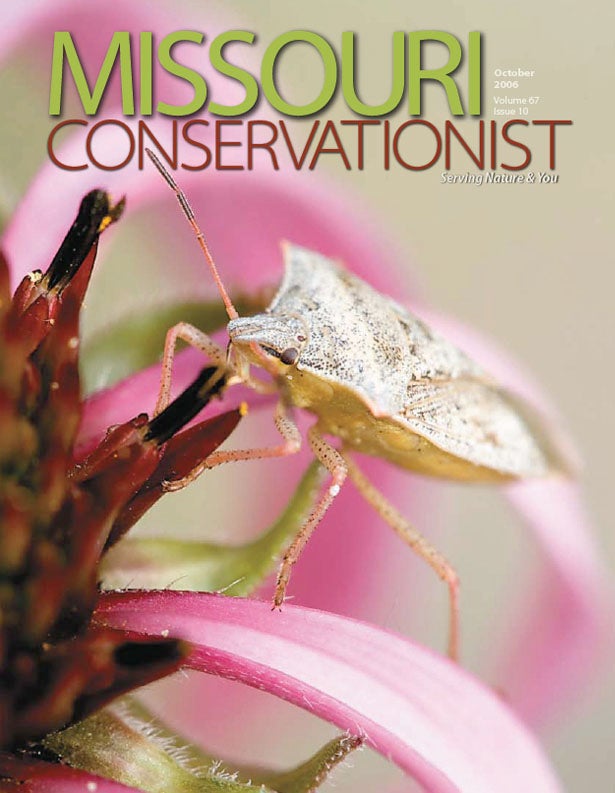Learning Outdoors
Step outside on cool October mornings to the earthy aroma of fallen leaves, honks of passing geese, and mist rising slowly from ponds. It’s easy to find simple pleasures outdoors, the gifts of this season. Easy, that is, away from the concrete.
If you have children—or even if you don’t—“No Child Left Behind” is something you’ve often heard as schools try to meet national testing needs. In response to that, there’s a new phrase: “No child left indoors.” The great thing is that it doesn’t take an act of Congress.
Richard Louv’s book, Last Child in the Woods, describes problems created by children’s lack of contact with nature. Effects of this “nature deficit disorder” include obesity, attention deficit disorders and more. Seeing the problem is one thing, though; creating solutions is quite another.
Helping Missourians connect with nature is an important goal for us. However, children spend less and less time outdoors. They’re also likely to learn more about a rainforest than a Missouri forest. At the same time, teachers and administrators work to create meaningful learning experiences, but they face the burden of mandatory testing and working with limited funds.
“What,” we asked ourselves, “can we do about it? How can we help teachers bring fun and learning about nature in our state and local communities into the classroom? And even better, how can we get Missouri children outdoors?”
Our answer is “Learning Outdoors,” a new school program we’re piloting this year in about 30 schools across the state. We hope to expand it to many schools in the years ahead. You may have noticed in September’s magazine that it’s one of the actions in The Next Generation plan. In “Learning Outdoors” we:
- Create educational units on keeping Missouri’s animals and plants healthy.
- Ensure these units help teachers prepare students for tests—helping to overcome rather than add to testing burdens.
- Require at least one of the related teaching activities be done outside.
- Support schools with grants for field trips, teaching materials and/or enhancement of outdoor learning areas on school grounds. Grants will be flexible to meet the needs and resources of particular schools.
Our first unit covers water and the life it supports in Missouri. It targets 6th–8th grades. After the pilot year, we’ll be ready to provide it to more schools. The next unit will target grades 3–5. It will focus on wildlife and the habitats they need, and be ready for schools in 2008. We’re also starting to develop variations on a “Conservation 101” unit for high school science and agriculture education classes.
Another program we offer to schools, especially 6th–12th grades, focuses on lifelong skills related to the outdoors. From a menu of five key skills, schools can choose teacher training in archery, map and compass, fishing, shooting sports, and camping/outdoor survival. Though this isn’t a new program, over the next year we’re going to make the offerings even better and easier to put into action.
Connecting to nature and the outdoors may be one of the most important things we can do for our children and ourselves. We’re eager to help make it happen. But you don’t have to wait for a school program to get started. Just step outside with those you love today to enjoy the gifts of the season.
Lorna Domke, outreach and education division chief
And More...
This Issue's Staff
Managing Editor - Nichole LeClair
Art Director - Cliff White
Artist - Dave Besenger
Artist - Mark Raithel
Photographer - Jim Rathert
Writer/editor - Tom Cwynar
Staff Writer - Jim Low
Designer - Susan Fine
Circulation - Laura Scheuler






















